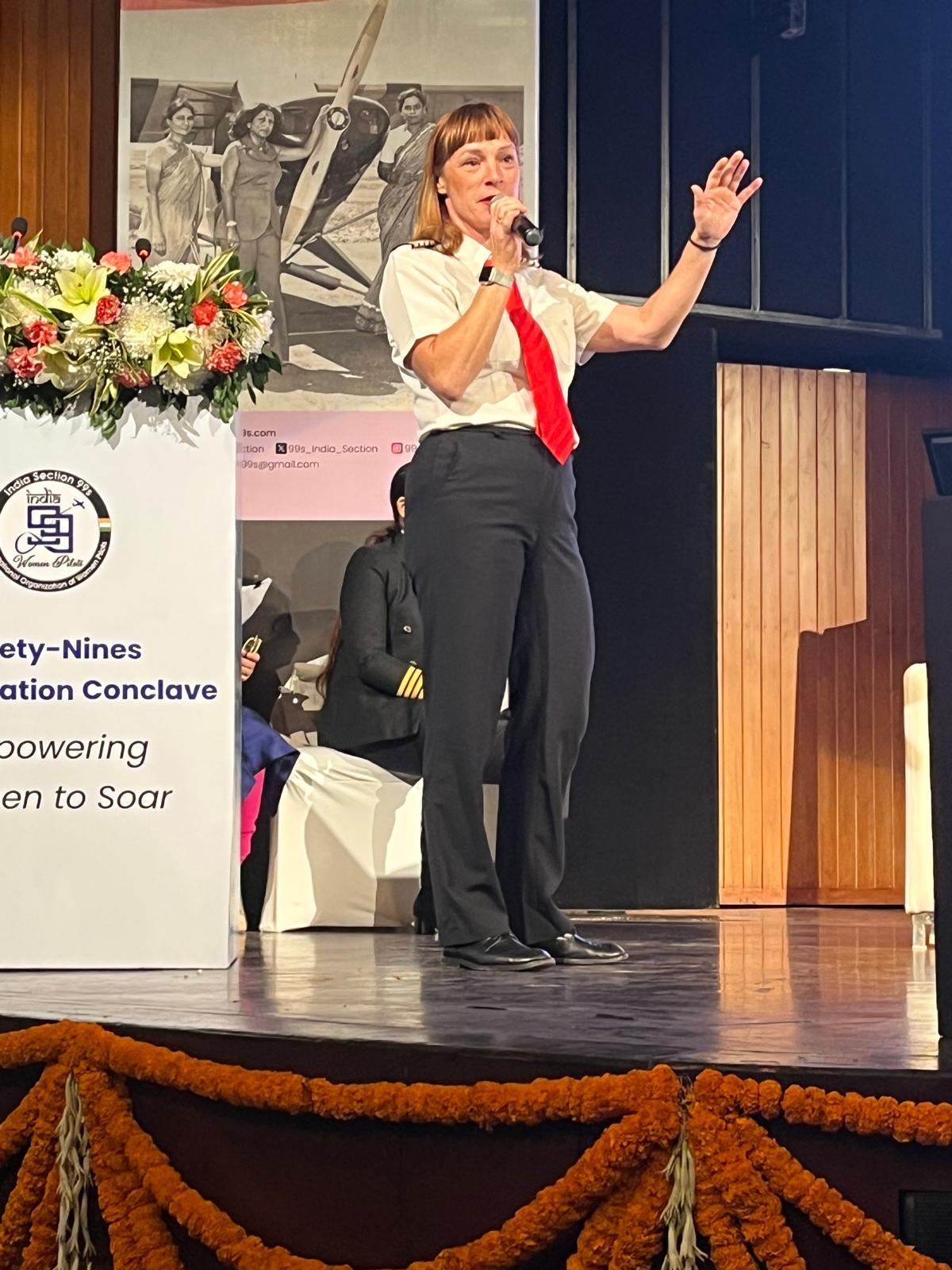Often, Fanni Pajer finds herself at airstrips where there aren’t many facilities but only maintenance hangars.
| Photo Credit: Special Arrangement
Glass jars wrapped inside jute bags and portable urination devices are a must-have in a cockpit for 48-year-old Fanni Pajer. As a ferry pilot, she flies small planes for an Austrian aircraft manufacturer, delivering them to customers around the world.
Transporting the DA-40 single-engine, light aircraft of aerospace company Diamond Aircraft — used often for pilot training, surveillance, and private flying — from its manufacturing site in Austria to customers in destinations as far as Australia could involve as many as 15 halts every four to five hours during a flight. An assignment that could pose unique challenges for a woman pilot.
Doing your business in a cockpit on a plane without loos can involve “bending this way and that way” using either portable urination devices or kitchen jars, while ensuring that the control column or the joystick used for manoeuvring the plane is not disturbed. “Let’s just say that doing yoga helps,” Pajer told a gathering in New Delhi with a laugh.
It was a get-together by The Ninety Nines Inc., an organisation of women pilots founded in New York in 1929 by the celebrated aviator Amelia Earhart. They extend mentorship and scholarships, and aim to create a sisterhood of pilots. Over 100 such pilots along with their partners were in India for 10 days last December, as a part of this mission.

Fanni Pajer at a get-together by The Ninety Nines Inc. in New Delhi.
Tricky terrains
At the event, Pajer went on to explain that often one lands at an airport either in Europe or Asia, where hangars do not even have toilets for women staff. Or there is a “VIP toilet” that is no more than a sandpit as she found out on a flight to Casablanca in November 2020. With COVID-19 restrictions, she couldn’t fly on a linear path from Austria into the African continent and instead flew along the western coast to enter Morocco, resulting in a longer than usual journey on this route.
Unlike commercial aircraft used to ferry passengers, the smaller planes that Pajer flies are often assigned landing permissions at the airport buildings meant for chartered planes or helicopters. More often than not, she also finds herself at airstrips where there aren’t any passenger facilities but only maintenance hangars. Such facilities typically have toilets only for airport staff who are mostly men.
Fanni Pajer is also an active blogger and shares her adventures on Instagram.
| Photo Credit:
Special Arrangement
Designed for men
Pajer had other observations to share. About the plastic bags used by male pilots inside cockpits that are designed for the male anatomy, making them unusable for women. Similarly, there are “survival suits” used by pilots on trans-Atlantic flights that haven’t yet been adapted for use by women aviators.
“These uniforms are designed for stick figures, and not for a person with breasts and hips. You can’t breathe in them,” says the mother of two. The suits are a specialised garment designed to keep the wearer afloat and maintain body temperature in cold water in case of an emergency.
With her 20 years of experience, Pajer had more than enough personal anecdotes to regale the audience. And not all of them had to do with relieving herself mid-flight. She hoped that these conversations as well as her active blogging, Instagram page and speaking assignments would help show what is possible for women in a male-dominated field as well as to bring about more empathy at the workplace.
Published – March 06, 2025 03:52 pm IST